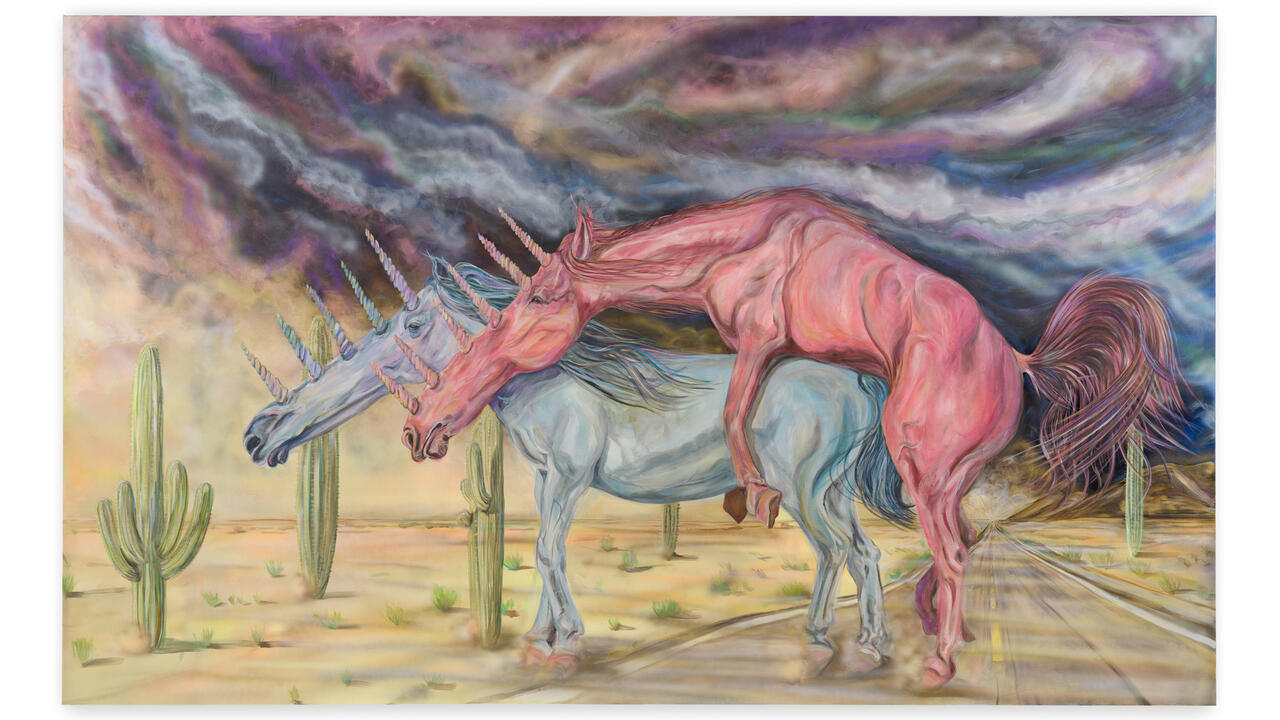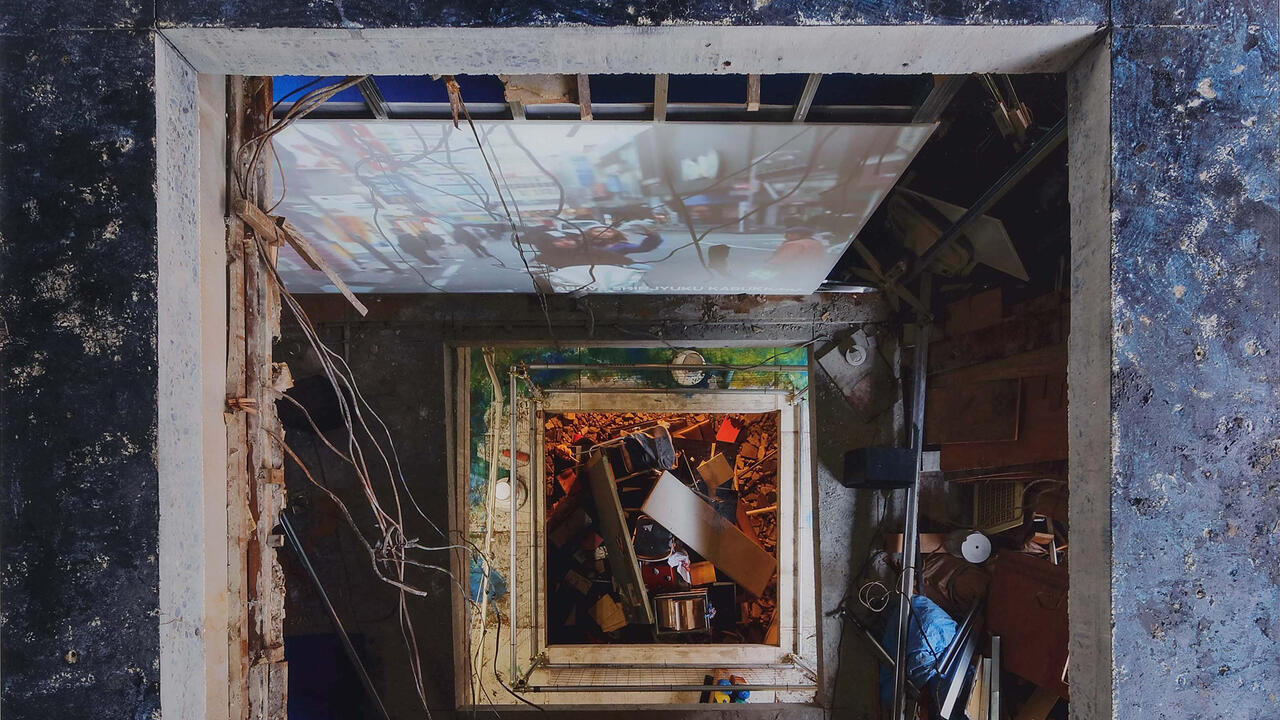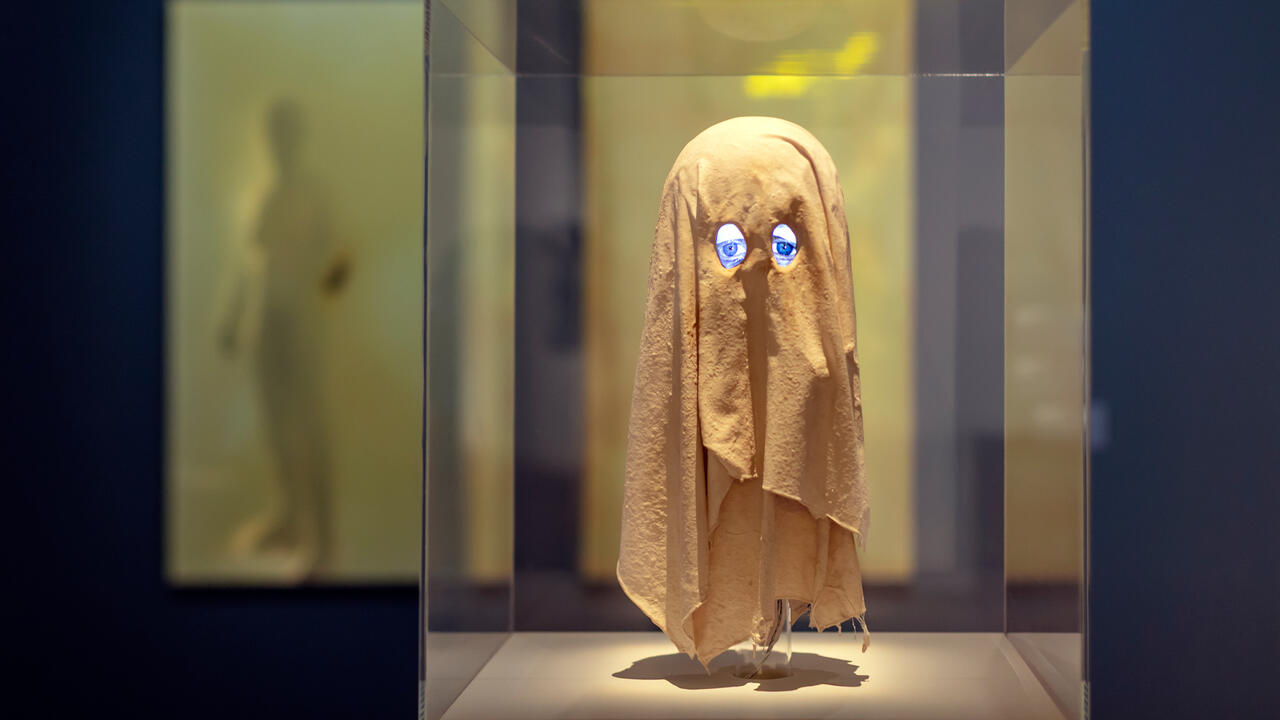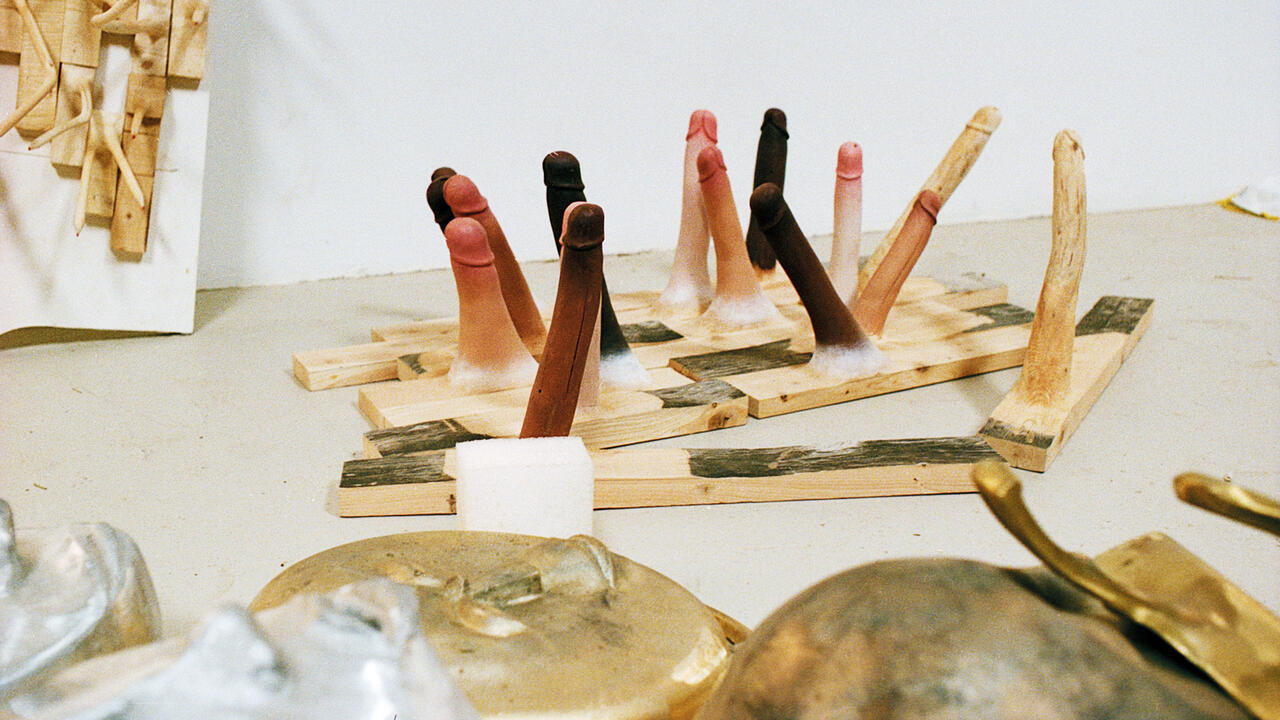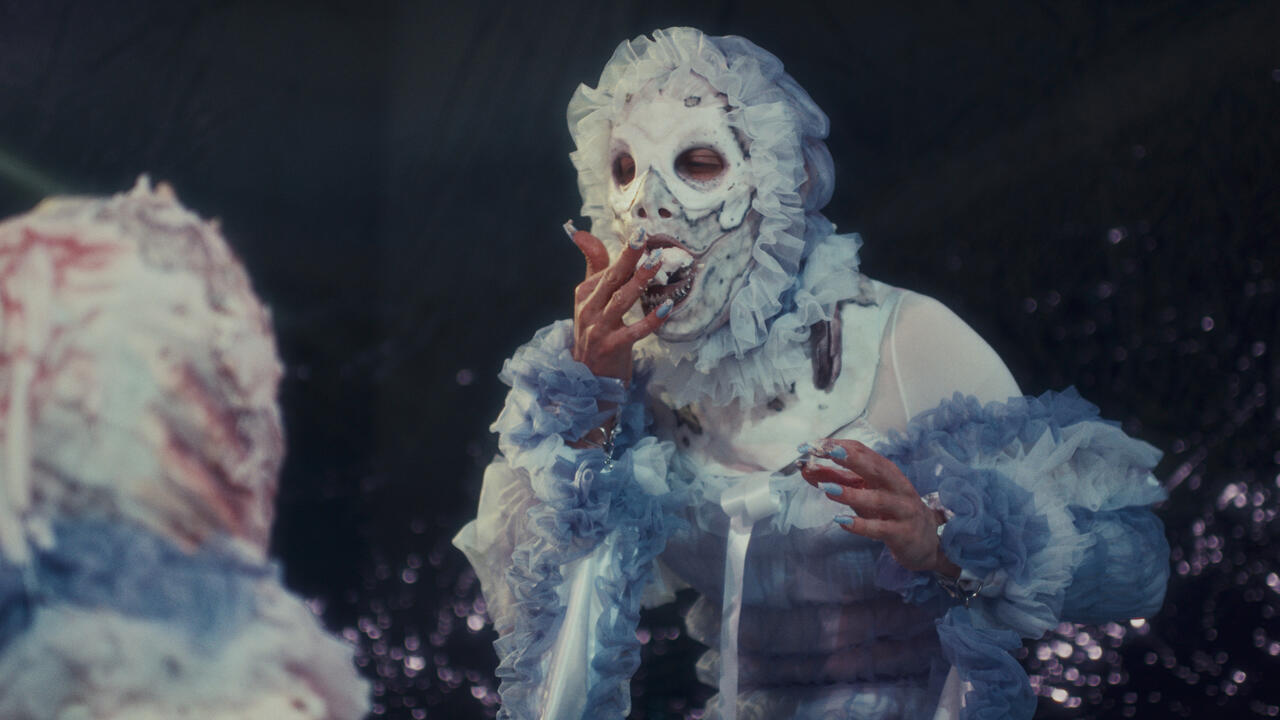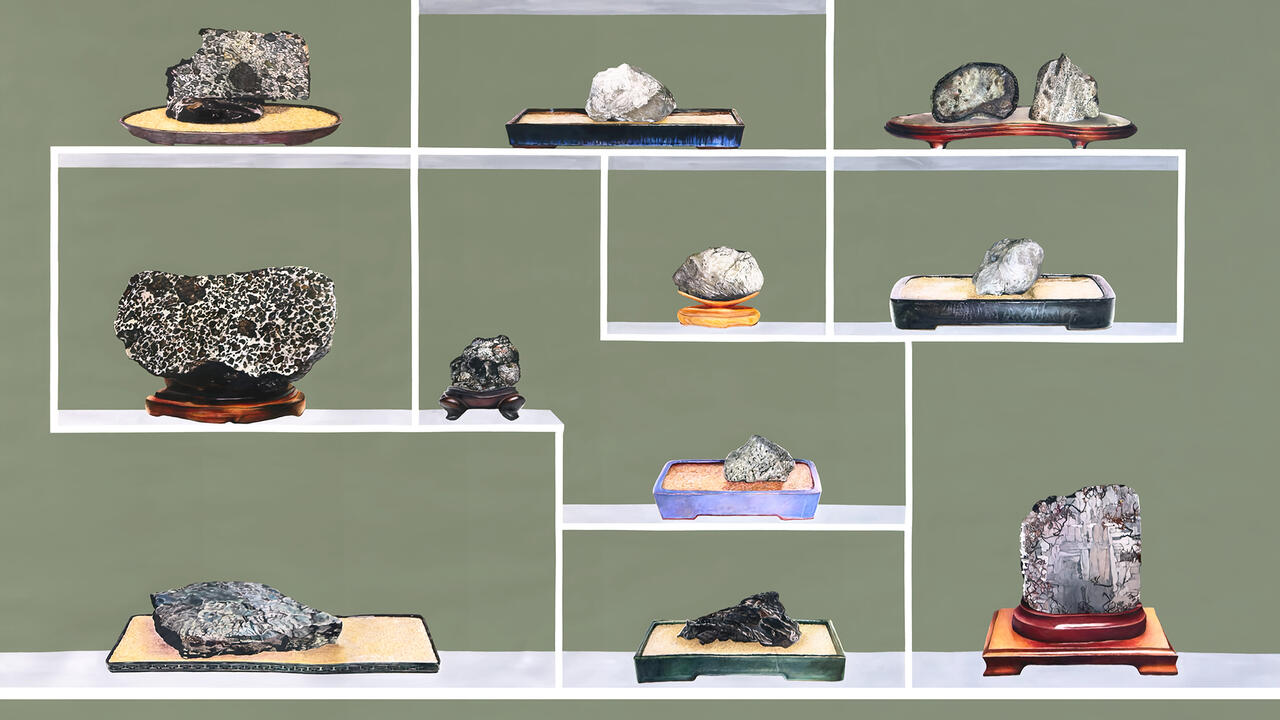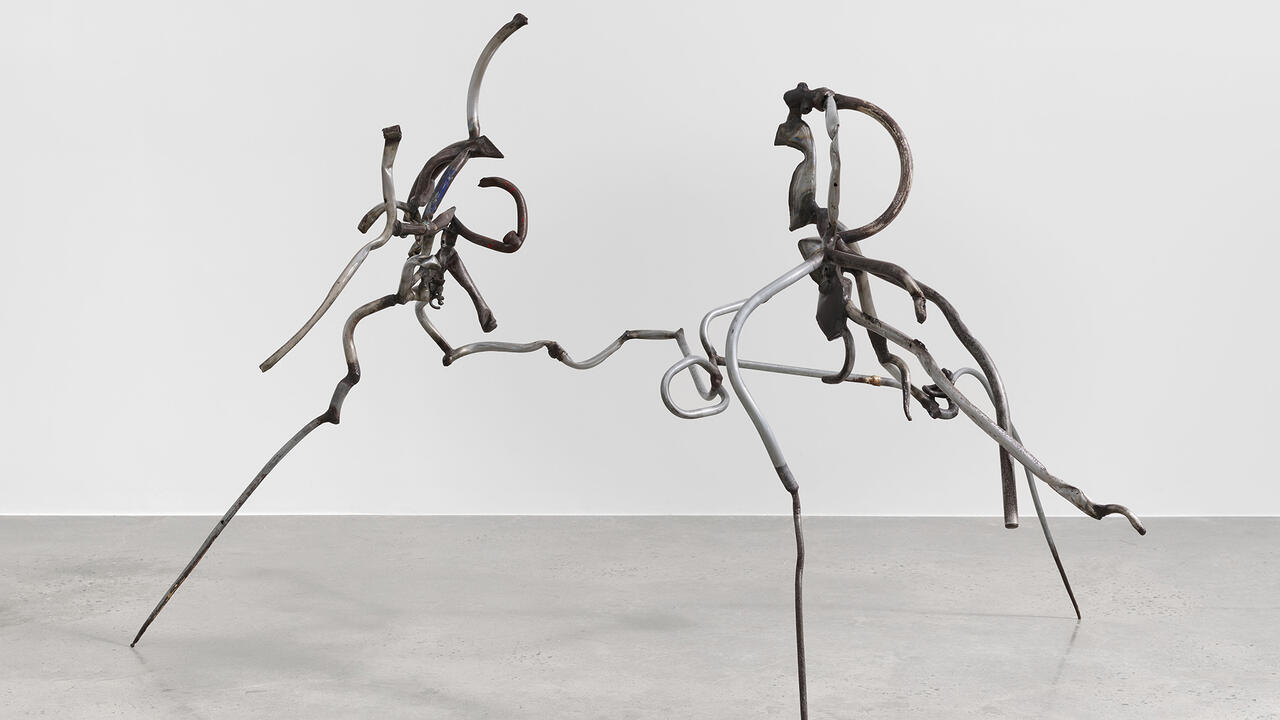The Best Shows in New York During Armory Week
From Jana Euler’s slugs to Kelly Akashi’s glass sponges, these are the must-see spring exhibitions
From Jana Euler’s slugs to Kelly Akashi’s glass sponges, these are the must-see spring exhibitions

Jana Euler
Artists Space
21 February – 19 April
There’s a slug strapped to a column on the facade of Artists Space. Made of stuffed linen painted an edible red, it’s both the funniest and saddest gesture in Jana Euler’s exhibition ‘Unform’. Rain will likely soak the giant gastropod until it droops in flaccid disrepair. Inside, slugs perform other aerial feats, forming rings around columns like great ouroboric chandeliers. The works give sculptural life to Euler’s witty paintings of insects, such as Slug Speed of Slug (2018), whizzing through their surroundings at improbable speeds. By comparison, the eight paintings on view here seem like last-minute additions to the sculptures – though gwf 9, Richter / Baselitz (2019), Euler’s ghostly portrait of a shark, stands out for combining the best-known tricks of its titular male German artists (blurry layers of grey paint and monumental verticality, respectively) while also resembling an uncircumcised penis.

Cinga Samson
Perrotin
22 February – 11 April
In Mati Diop’s 2019 film Atlantics, the ghosts of drowned Senegalese migrants haunt a rapacious developer who withheld their pay. The largest of Cinga Samson’s deeply unsettling paintings at Perrotin seem like sequels: crisply-rendered black women and men, their zombie-white eyes devoid of pupils, pose before apartheid-era buildings in Cape Town, where the artist lives and works, or in lush jungle settings, bearing signifiers of consumer culture – designer shopping bags from Apple and Dior. Each work is awash with a dim blue-grey, as if rendered at twilight or just before a storm. Are these the spectres of late capitalism and colonial trauma? Comprising an astonishing 28 paintings completed in the past year alone, Samson’s New York debut proves he is a force to be reckoned with.
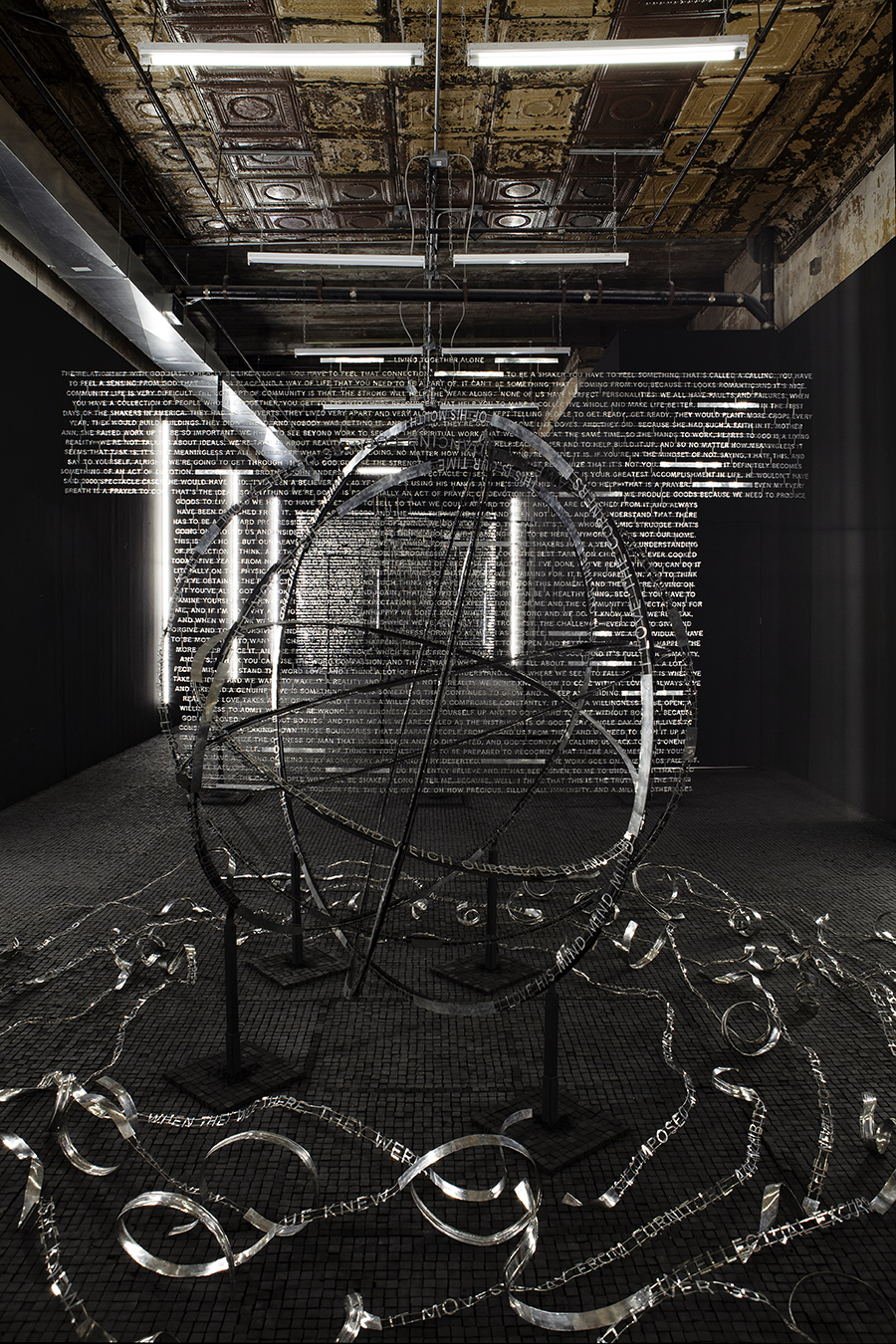
Jonathan Berger
Participant Inc.
23 February – 5 April
I’ll confess: I’m not fond of exhibitions that require a lot of reading, at least not in the gallery. Although ‘An Introduction to Nameless Love’, Jonathan Berger’s show at Participant Inc., features a lot of text – 33,000 letters to be precise, each cut and hand-hammered individually from tin – it’s like a book I’d love to live inside. Glimmering quotes from interviews with a wide range of subjects – from Shaker Brother Arnold Hadd to turtle conservationist Richard Ogust – are mounted on wire grids so fine that they merge diaphanously with one another. A floor of cubed charcoal briquettes crackles underfoot. As the show’s title suggests, the words here are all about kinds of love that aren’t strictly romantic: for instance, our passion for animals or our devotion to god. Musings by designers Charles and Ray Eames form a celestial orb in the back of the gallery and unfurl like ribbons on the floor around it. Bring your glasses and plan to stay awhile.

Kelly Akashi
Tanya Bonakdar Gallery
27 February – 18 April
In January 2017, reviewing Kelly Akashi’s work for this magazine, I described her as a ‘singular alchemist’. With this exhibition, her first at Tanya Bonakdar Gallery, the artist’s talent for transmutation has reached new heights. Weep (2020), the show’s centrepiece, is a large bronze orb cast from slowly accreted drips of wax, which leaks water from dozens of tiny orifices. From a distance, it resembles an enormous, mouldy tangerine – a fruit Akashi has cast in the past. This fountain is encircled by walnut pedestals, their curves corresponding to the form of the artist’s own electrocardiogram; on each, a bronze cast of her hand supports or plays with a fine glass object, enhancing their talismanic qualities. One hand rests in the depression of a purple bowl, as though the vessel has melted upon touch; another lifts a spherical sea sponge of fine crystal. Upstairs, glass antlers suspended from silk ropes summon visions of Valhalla.

Lari Pittman
Lehmann Maupin
5 March – 25 April
‘I want the painting to feel like it landed there,’ Lari Pittman told me in his Los Angeles studio in February, as he showed me the new works that comprise ‘Found Buried’, his first solo show at Lehmann Maupin. It would take a magnifying glass to see that, in fact, the artist has layered precisely stencilled forms atop each other and then treated them with a chemical suppressant, leaving a picture plane that’s graphic and flat. If Pittman’s paint is suppressed, so are the bodies he’s composed with it: some beaten and bloodied, others floating above the earth, these figures wear colonial or indigenous costume – spectres, perhaps, of America’s genocidal past. Patterned backdrops and borders contain objects rich in symbolism – pomegranates, pickaxes – that invoke sex as well as violence. Pittman is master of a subversive queer art that makes the decorative political and the political appear decorative. Here, he’s at the top of his game.

Kevin Jerome Everson
Andrew Kreps Gallery
29 February – 11 April
The two grainy films that bookend Kevin Jerome Everson’s ‘Westinghouse’ both record a young man at an intimate distance as he carefully irons a white sheet. One film (Westinghouse 3, 2019) is saturated with colour – the man’s skin amber, the sunlight golden on his crisp white T-shirt and ironing board – while the other (Westinghouse 1, 2019) has been thrown into high contrast, its subject reduced to shadow. His labour appears, by turns, empathetic and alienated. Between both projections, a series of pedestals bear black rubber casts of irons once manufactured by the Westinghouse Electric Corporation in the artist’s hometown of Mansfield, Ohio – all the more haunting since, if heated, they’d melt. As happened all over America’s industrial ‘Rust Belt’, when the company went bust, it took much of the working-class town down with it. The history of Black labour in the midwestern US is subtly invoked here by the textures of daily experience for those who lived it.

Nick Mauss
303 Gallery
29 February – 11 April
To enter Nick Mauss’s exhibition at 303 Gallery, you must push through not one but two doors, painted with loose outlines of figures amidst swathes of lavender and teal, like the entrance to a closet or a tomb. The doors choreograph how visitors move through a show that – like so much of Mauss’s work – is itself about choreography. The bodies of dancers are rendered in acrylic, ink and charcoal with the fast yet sure hand of a balletomane, their arms raised or extended against screen-printed spangles and silver paint – hallmarks of Andy Warhol. If Mauss’s paintings seem to merge the pop-art icon’s later style with his early years as a fashion illustrator, they also trace a lineage of the queer image from the figurative to the abstract. Decorative patterns are both inscribed onto and stand in for human skin (Compilation, 2020); chequers cascade down the ponytail of a woman as she looks in a vanity mirror (Untitled, 2016); while scalloped shells and drapery folds evoke the bodies that may have once resided or moved in them (As Companions, 2020).
Also Recommended:
Willa Nasatir
Chapter NY
22 February – 29 March
Curtis Talwst Santiago
Rachel Uffner Gallery
1 March – 26 April
The Drawing Center
20 February – 10 May
Rebecca Morris
Bortolami
21 February – 28 March
‘Vida Americana’
The Whitney Museum of American Art
17 February – 17 May









